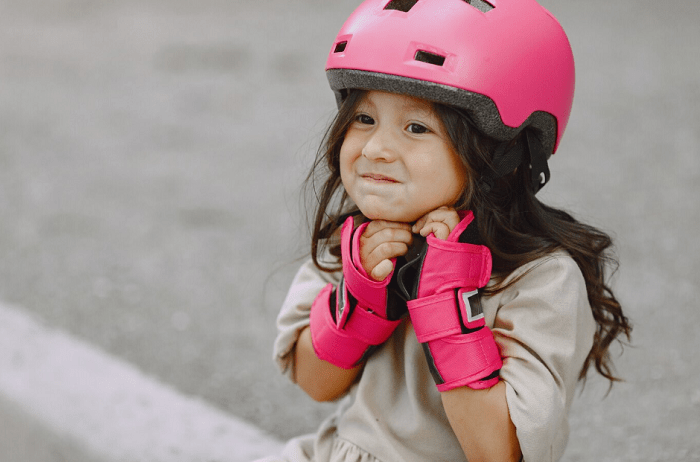
As more families embrace biking, scootering, and other outdoor activities, safety has become a top priority. Among the most essential safety gear is the helmet a simple yet powerful protective accessory that saves lives. For children especially, choosing the right helmet for kids is not just a matter of comfort or fashion it’s about safeguarding their future.
In this sponsored post, we explore why helmets matter, how to choose the right fit for your child, and what features to look for in a quality helmet.
Why Helmets Are a Must for Every Rider
Whether your child is learning to ride a bicycle, riding a skateboard, or traveling as a pillion on a motorcycle, a helmet is non-negotiable. Here’s why:
- Reduces Risk of Head Injury: Helmets reduce the risk of severe head trauma by absorbing impact in the event of a fall or collision.
- Develops a Safety Habit Early: Teaching kids to wear helmets from the beginning instills lifelong safety habits.
- Compliance with Law: In many regions, helmets are mandatory for children riding bicycles or two-wheelers.
Why Special Helmets for Kids Matter
You may think a regular adult helmet will do the trick, but children require specific features in their headgear. A helmet for kids is engineered with smaller, lighter shells and extra padding to ensure both safety and comfort.
Key reasons to choose a kids-specific helmet:
- Proper Sizing: Children’s helmets are designed to fit smaller heads without being loose or unstable.
- Lightweight Design: Kids are more likely to wear helmets that don’t feel bulky or heavy.
- Fun Designs: Helmets with bright colors or character themes encourage regular use.
Types of Helmets for Kids
Just like adults, kids can choose from various types of helmets depending on the activity:
- Bicycle Helmets
- Lightweight and ventilated
- Usually round or oval in shape
- Commonly used for cycling, skateboarding, or rollerblading
- Motorbike Helmets for Kids
- Heavier and sturdier
- Offer full-face or open-face options
- Ideal for pillion riders on scooters or motorcycles
- Multi-Sport Helmets
- Versatile use for skate parks, scooters, BMX, etc.
- Certified for multiple activities
- Full Face Helmets for Off-Roading or Racing
- For older kids into motocross or adventure sports
- Offers extra chin and jaw protection
How to Choose the Best Helmet for Kids
Here’s a checklist every parent should consider before purchasing a helmet for kids:
1. Check the Safety Certifications
Look for helmets that meet local or international safety standards like:
- ISI (India)
- CPSC (USA)
- CE (Europe)
This ensures the helmet has been tested for impact resistance and overall safety.
2. Ensure a Proper Fit
Fit is everything when it comes to helmet safety. Here’s how to ensure a good fit:
- The helmet should sit snugly on the head without wobbling.
- It must sit level and low on the forehead (about two fingers above the eyebrows).
- The chin strap should form a “V” under the ears and be tight enough to keep the helmet secure but not uncomfortable.
3. Check for Adjustability
A good kids’ helmet comes with:
- Adjustable inner dial or padding to accommodate growing heads.
- Quick-release buckles for easy on and off.
- Padding that is removable and washable.
4. Ventilation and Comfort
- Helmets with multiple vents keep the head cool during long rides.
- Look for breathable lining to reduce sweat and irritation.
5. Lightweight Yet Durable
Kids won’t enjoy wearing heavy helmets. Choose one made of lightweight materials like polycarbonate shells and EPS foam interiors.
Getting Your Child Excited About Helmets
Children are more likely to wear helmets if they’re involved in choosing them. Here are a few tips:
- Let them pick colors or patterns they like many helmets for kids come in superhero, cartoon, or animal themes.
- Encourage them by explaining how “cool” and responsible it is to wear one.
- Reward consistent usage with positive reinforcement.
Remember: The best helmet is the one your child will wear every single time they ride.
Care and Maintenance Tips for Kids’ Helmets
A helmet for kids, like any safety gear, needs regular care to maintain effectiveness:
- Avoid Dropping It: A helmet that has been dropped may have internal cracks and lose its impact-resistance capability.
- Clean Gently: Use mild soap and water to clean the surface and inner padding.
- Store Properly: Keep it away from direct sunlight and moisture when not in use.
- Replace When Needed: If the helmet has been in an accident or has visible damage, replace it immediately. Even without visible damage, it should be replaced every 3–5 years.
Mistakes to Avoid
- Using Adult Helmets for Kids: These won’t provide the proper fit and protection.
- Loose Straps: If the chin strap isn’t secure, the helmet can shift or fall off during impact.
- Choosing Style Over Safety: While design matters, safety certification and fit are more important.
Final Thoughts
A helmet for kids is more than just an accessory it’s a crucial protective gear that can make a life-saving difference. From toddlers on balance bikes to teens on scooters or motorcycles, every child needs a helmet that fits well, feels comfortable, and meets safety standards.
As parents, ensuring that our children wear their helmets every time they ride sets the foundation for a lifetime of safe, smart riding. Whether it’s their first wobbly ride or a regular school commute, give them the gift of protection and confidence with the right helmet.
Safety begins with the right gear. Choose a certified, comfortable helmet for your child and make every ride a secure one.




